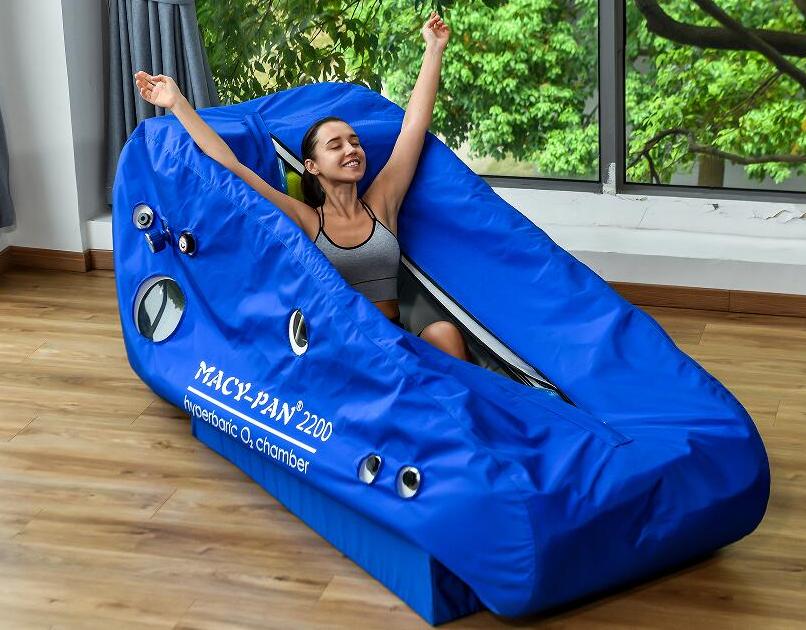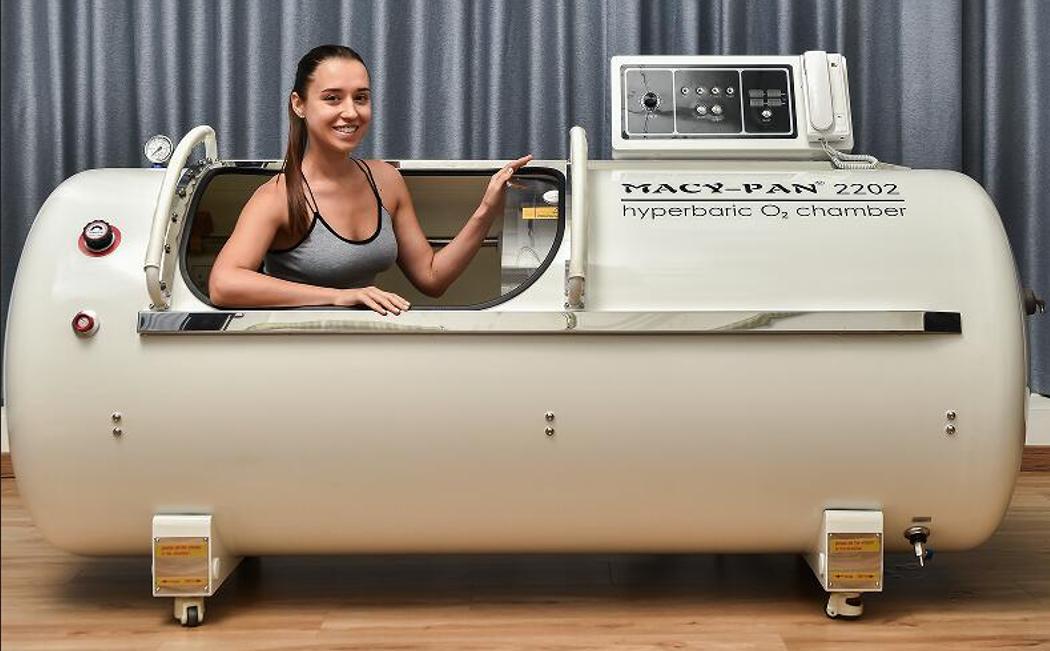Hyperbaric Oxygen Therapy (HBOT) is a treatment in which a person inhales pure oxygen in an environment with pressure higher than atmospheric pressure. Usually, the patient enters a specially designed Hyperbaric Oxygen Chamber, where the pressure is set between 1.5-3.0 ATA, much higher than the partial pressure of oxygen under normal environmental conditions. In this high-pressure environment, oxygen is not only transported through hemoglobin in red blood cells but also enters the plasma in large quantities in the form of "physically dissolved oxygen," allowing body tissues to receive a higher oxygen supply than under conventional breathing conditions. This is referred to as "traditional hyperbaric oxygen therapy."
While low pressure or Mild hyperbaric oxygen therapy began to emerge in 1990. In the early 21st century, some devices of mild hyperbaric oxygen therapy with pressure 1.3 ATA or 4 Psi were approved by the U.S. FDA for specific conditions such as altitude sickness and health recovery. Many NBA and NFL athletes adopted mild hyperbaric oxygen therapy to relieve exercise-induced fatigue and accelerate physical recovery. In the 2010s, mild hyperbaric oxygen therapy was gradually applied in fields such as anti-aging and wellness.
What is Mild Hyperbaric Oxygen Therapy (MHBOT)?

Mild Hyperbaric Oxygen Therapy (MHBOT), as the name suggests, refers to a type of low-intensity exposure in which individuals inhale oxygen at a relatively high concentration (commonly supplied via oxygen mask) under chamber pressures of less than about 1.5 ATA or 7 psi, typically ranging from 1.3 - 1.5 ATA. The relatively safe pressure environment allows users to experience hyperbaric oxygen on their own. In contrast, traditional medical Hyperbaric Oxygen Therapy is usually conducted at 2.0 ATA or even 3.0 ATA in hard chambers, prescribed and monitored by physicians. There are significant differences between mild hyperbaric oxygen therapy and medical hyperbaric oxygen therapy in terms of pressure dosage and regulatory framework.
What are the possible physiological benefits and mechanisms of mild hyperbaric oxygen therapy (mHBOT)?
“Similar to medical hyperbaric oxygen therapy, mild hyperbaric oxygen therapy increases dissolved oxygen through pressurization and oxygen enrichment, amplifies the oxygen diffusion gradient, and improves microcirculatory perfusion and tissue oxygen tension. Clinical studies have shown that under conditions of 1.5 ATA pressure and 25-30% oxygen concentration, subjects exhibited enhanced parasympathetic nervous system activity and increased natural killer (NK) cell counts, without elevation of oxidative stress markers. This suggests that a low-intensity oxygen dose” can promote immune surveillance and stress recovery within a safe therapeutic window.
What are the potential advantages of mild hyperbaric oxygen therapy (mHBOT) compared to Medical hyperbaric oxygen therapy (HBOT)?

Tolerance: Breathing oxygen in chambers with lower pressure generally provides better ear pressure compliance and overall comfort, with theoretically lower risks of oxygen toxicity and barotrauma.
Usage scenarios: Medical hyperbaric oxygen therapy has been used for indications such as decompression sickness, CO poisoning, and hard-to-heal wounds, typically implemented at 2.0 ATA to 3.0 ATA; mild hyperbaric oxygen therapy is still a low-pressure exposure, with evidence accumulating, and its indications should not be considered equivalent to those of medical clinical hyperbaric oxygen therapy.
Regulatory differences: Due to safety considerations, Hard sided hyperbaric chamber is generally used for medical hyperbaric oxygen therapy, while Portable hyperbaric oxygen chamber can be used for both mild hyperbaric oxygen therapy. However, soft mild hyperbaric oxygen chambers approved in the U.S. by the FDA are primarily intended for mild HBOT treatment of acute mountain sickness (AMS); non-AMS medical uses still require careful consideration and compliant claims.
What is the experience like when undergoing treatment in a mild hyperbaric oxygen chamber?
Similar to medical hyperbaric oxygen chambers, in a mild hyperbaric oxygen chamber, patients may experience ear fullness or popping at the beginning and end of the treatment, or during pressurization and depressurization, similar to what is felt during airplane takeoff and landing. This can usually be relieved by swallowing or performing the Valsalva Maneuver. During a mild hyperbaric oxygen therapy session, patients are generally lying still and can relax comfortably. A few individuals may experience brief light-headedness or sinus discomfort, which is usually reversible.
What precautions should be taken before undergoing mild hyperbaric oxygen chamber (MHBOT) therapy?
Mild hyperbaric oxygen therapy can serve as a “low-load, time-dependent” physiological modulation method, suitable for individuals seeking gentle oxygen enrichment and recovery. However, before entering the chamber, flammable items and oil-based cosmetics must be removed. Those seeking treatment for specific medical conditions should follow clinical HBOT indications and undergo therapy in compliant medical institutions. Individuals with sinusitis, eardrum disorders, recent upper respiratory infections, or uncontrolled pulmonary diseases should first undergo a risk assessment.
Post time: Sep-02-2025

